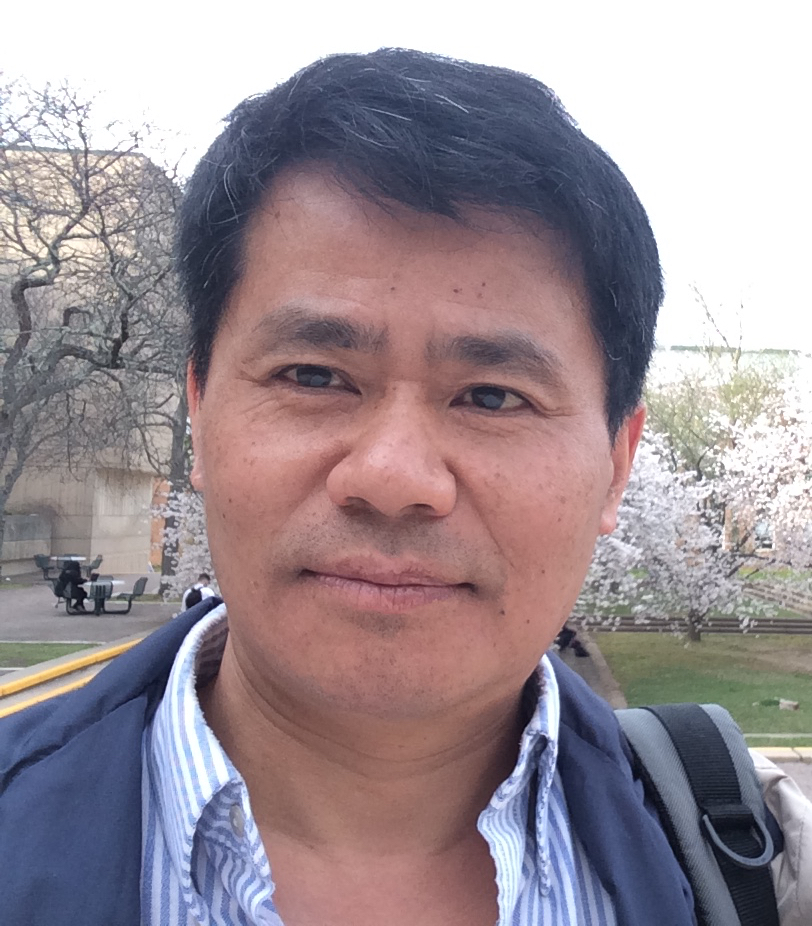
| Faculty | / | Staff | / | Department of Geosciences | / | Stony Brook University |

Professor
Department of Geosciences
Stony Brook University
Stony Brook, NY, 11794
Phone: (631) 632-1726; Fax: (631) 632-8240
E-mail Address: Lianxing.Wen at stonybrook.edu
Research Highlights
Discoveries of Earth's Interior
Professor Wen's group made many seminal discoveries of the Earth's interior that had fundamentally changed the views of how the Earth works. Among those discoveries are: the east-west hemispheric difference of seismic velocity and attenuation in the top of the inner core, localized temporal change of inner core surface, inner core surface topography, localized mushy zone in the top of the inner core, two continental-scale compositional anomalies at the base of the mantle beneath Africa and Pacific, and various ultra-low velocity zones beneath many hotspots.
China Seismological Reference Model
Professor Wen's group leads a community effort to construct a China Seismological Reference Model (CSRM).The CSRM is jointly constrained by various types of seismic constraints extracted from the seismic data recorded at 4511 seismic stations in continental China following a top-down approach, with the seismic structures in the shallower part of the Earth constrained first. The CSRM is of the highest resolution at the continental scale in China and
serves as a primary source for the current state of seismological research in China.
Nuclear Test Monitoring
Professor Wen's group's developed seismic methods for studying nuclear tests
and applied them to monitor North Korea's nuclear tests.
His group was the first to develop methods to pin down a nuclear
test with a resolution of 100 meters, the first to pinpoint
North Korea's 2009 nuclear test location to Mount Mantap, and the first to report the
collapse of Mount Mantap after North Korea's 3 September 2017 test. His group also
developed a method to detect mini nuclear tests down to a yield of few tons, and
reported a mini nuclear test North Korea conducted on May 12, 2010.
Mantle Geodynamics and Geochemistry
Professor Wen's group developed mantle convection models that consistently
explained surface observations of gravity field, topography, plate motion,
intra-plate stress and surface strain rate.
His group was the first to propose a stratified convection model at about
1000 km depth that consistently explains the observed gravity and surface topography
and was the first to show that the continent-ocean viscosity difference
and a low-viscosity asthenosphere are essential to generate the surface plate
movement as observed.
With Professor William Holt's group, they developed a coupled mantle-lithosphere
dynamical model that successfully explains the
surface intra-plate stress and strain rate map.
His group also proposed a unified thermo-chemical plume model that physically related
a large-scale seismic anomaly in deep Earth to
a large-scale geochemical anomaly (the DUPAL anomaly) and relatively-fixed
hotspot motions observed at the Earth's surface.
Ever Changing Earth and Its Revealing
Professor Wen's group quantified Earth's stress changing in recent decades, discovered many anomalous strain changes in the underground strainmeters, and proposed many new near-surface physical mechanisms. In Earth's stress research, his group established a physical framework and built a global database of stress changes on the Earth caused by the major forces acting upon the Earth, including hydrological loading, atmospheric pressure, tidal and non-tidal ocean water, solid lunisolar tides, pole tide, and postglacial rebound. The stress database provides a resource for studying the triggering mechanisms of various tectonic events. In Earth's strain research, his group identified an abnormally strong daily-cycle strain tide with a proposal of a combined mechanism of elastic loading of surface barometric pressure and thermoelastic deformation induced by temporally and spatially varying surface temperature for its cause, and strong localized months-long strain variations with a proposal of a rainfall-hydrological diffusion-poroelastic deformation mechanism for their cause.
Triggering of Induced Earthquakes
Professor Wen's group studied the induced earthquakes in Hutubi gas field,
the largest gas storage field in China, in one of the very rare studies that
was able to obtain the daily operation records of the gas field.
The study showed that earthquakes were induced on fluid-pressured
faults with a rate- and state-dependent friction law through simultaneous
abrupt changes of injection rate and well pressure.
The study also pointed to the possibility that induced earthquakes may be
controllable in some practical field operations.
Microseismic Monitoring of Hurricane Sandy
Professor Wen's group developed a method
to monitor the track and strength of Hurricane Sandy in real time,
using the micro-seismic signals generated by the hurricane.
That was the first of such study, accomplished by also formulating a physical model that
quantifies the coupling among Hurricane pressure fluctuation,
ocean wave, and solid Earth.
Physics of Deep Earthquakes
Professor Wen's group systematically studied and classified the source processes
of global large deep-focus earthquakes, and proposed that large
deep-focus earthquakes are caused by
cascading failure of shear thermal instabilities in pre-existing weak zones,
with the perturbation of stress generated by a shear instability triggering another.
Mars' Composition and Dynamics
Professor Wen's group used the total mass, possible core radius and
the observed mean moment of inertia
factor of Mars to constrain mineralogical and compositional structures of Mars.
The study also concluded that Mars could have the same nonvolatile bulk composition as that of
CI chondrite and it has no perovskite layer in the bottom of the mantle.
Method Developments
Professor Wen's group developed a series of innovative methods to study seismic
event, Earth's interior structure and viscous flow inside the planets. Among them are:
hybrid methods for accurately simulating seismic wave propagation through Earth's
deep complex media,
migration methods for imaging the Earth's interior,
a maximum covariance direction method for detecting unconventional seismic sources,
a match and locate method for detecting/locating small seismic events,
a machine-learning method for classifying
naturally occurring earthquakes, explosions and induced earthquakes,
and a spectral method for simulating mantle viscous flow
with lateral variation of viscosity.
|Publications |
Curriculum Vitae |
National Initiatives |
Research Highlights |
Open Sources |
Group Alumni |
Press |
Solar System
Admissions
Campus Directory
SB Calendar
Environmental Health & Safety
College of Arts & Science